Have you ever wondered if eating burnt food is harmful to your health? In this comprehensive guide, we will delve into the potential health risks associated with consuming burnt food and explore ways to adjust your cooking habits for better health.
- Eating burnt food can lead to the formation of acrylamide, a chemical compound believed to be a probable human carcinogen.
- Acrylamide is primarily produced when starchy foods are cooked at high temperatures, causing browning or charring.
- Grilled, fried, and broiled meats can also contain harmful compounds like heterocyclic amines and polycyclic aromatic hydrocarbons.
- Studies on animals have shown that these compounds can cause DNA changes and the development of tumors.
- The effects of consuming burnt food may vary between individuals, and more research is needed to understand the risks fully.
- To minimize acrylamide intake, avoid overcooking or burning foods and adopt healthier cooking practices.
- Incorporating a balanced diet that includes a variety of nutrient-rich foods can help mitigate potential health risks associated with consuming burnt food.
Understanding the Formation of Acrylamide
To understand the potential health risks of eating burnt food, it’s important to grasp the formation of acrylamide – a chemical compound that can be created during the cooking process when starchy foods are exposed to high temperatures. Acrylamide is formed through a chemical reaction called the Maillard reaction, which occurs when sugars and amino acids are heated together.
Starchy foods like potatoes, bread, and cereals contain naturally occurring sugars and the amino acid asparagine. When these foods are cooked at temperatures above 120 degrees Celsius (248 degrees Fahrenheit), the Maillard reaction takes place, resulting in the browning and flavor development of the food. However, it’s worth noting that prolonged cooking or excessive heat can lead to the formation of acrylamide.
Research has shown that the highest levels of acrylamide are found in foods that have been deep-fried, roasted, or baked to a dark brown color. French fries, potato chips, and toasted bread are some examples of foods that can contain significant amounts of acrylamide when overcooked.
| Food | Acrylamide Level (µg/kg) |
|---|---|
| Potato Chips | 500-3,000 |
| French Fries | 200-1,000 |
| Bread | 20-200 |
The formation of acrylamide is believed to be a probable human carcinogen, meaning it has the potential to cause cancer. However, it’s important to note that the current scientific understanding of the link between acrylamide and cancer risk in humans is still evolving. As a precautionary measure, it is recommended to minimize the consumption of burnt or overcooked foods and adopt healthier cooking practices to reduce exposure to acrylamide.
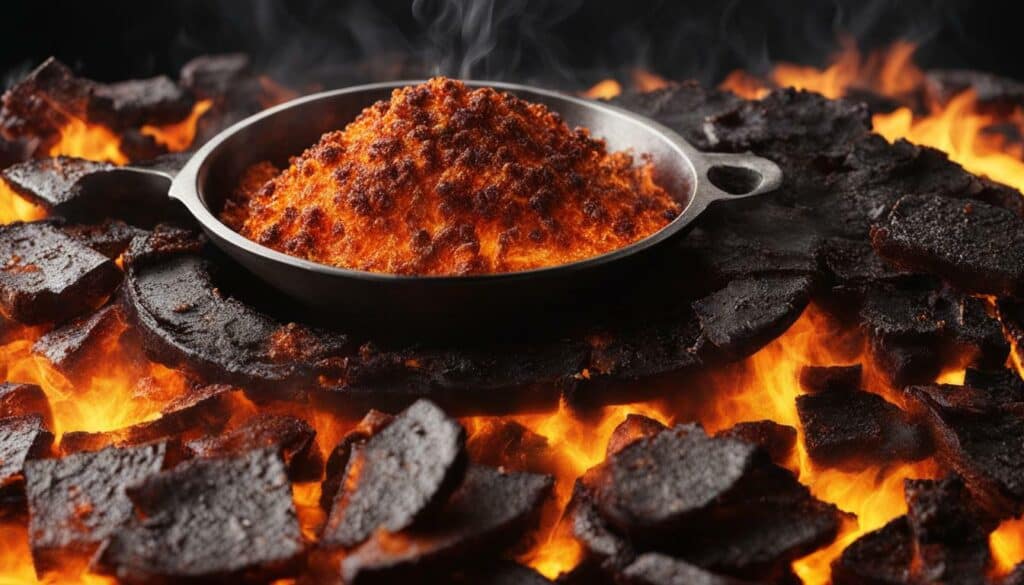
In the next section, we will delve deeper into the possible link between acrylamide and cancer risk, as well as explore the harmful compounds that can be produced in grilled, fried, and broiled meats.
Acrylamide and Cancer Risk
While the connection between acrylamide and cancer risk is still being studied, it’s worth considering the potential dangers of consuming burnt food that contains this chemical compound. Acrylamide is a byproduct of the Maillard reaction, which occurs when starchy foods are cooked at high temperatures, causing them to brown. This reaction can result in the formation of acrylamide, a substance that has been classified as a probable human carcinogen by the International Agency for Research on Cancer (IARC).
Studies on animals have shown that exposure to high levels of acrylamide can cause DNA changes and the development of tumors. While these findings cannot be directly applied to humans, they raise concerns about the potential health risks associated with consuming burnt or overcooked foods.
To minimize acrylamide intake, it is advisable to avoid overcooking or burning starchy foods such as potatoes and toasting bread to a lighter brown color. Additionally, reducing the consumption of fried foods, which can also contain acrylamide, is recommended.
| H3: Strategies to Reduce Acrylamide Intake |
|---|
| 1. Toast bread to a light brown color instead of darkening it. |
| 2. Avoid overcooking or burning potatoes, opting for a golden brown hue instead. |
| 3. Reduce consumption of fried foods, as they can contain higher levels of acrylamide. |
It’s important to note that the effects of consuming burnt or overcooked foods may vary between individuals. Some people may be more susceptible to the potential risks associated with acrylamide exposure due to genetic factors or other underlying health conditions. Therefore, further research is necessary to fully understand the impact of burnt food on human health.
Instead of focusing solely on the potential dangers of burnt food, it is advisable to adopt a balanced and varied diet that includes plenty of fruits, vegetables, whole grains, and lean meats. By doing so, individuals can ensure they are obtaining necessary nutrients while minimizing potential risks associated with consuming burnt food.

Harmful Compounds in Grilled, Fried, and Broiled Meats
It’s not just burnt plant-based foods that may pose health risks – the charring of meats during grilling, frying, or broiling can also lead to the formation of harmful compounds. When meats are cooked at high temperatures, the Maillard reaction occurs, causing browning and the production of compounds like heterocyclic amines and polycyclic aromatic hydrocarbons.
Heterocyclic amines (HCAs) are formed when amino acids and creatine, naturally present in meats, react at high temperatures. These compounds have been found to have mutagenic and carcinogenic properties. Studies on animals have shown that exposure to HCAs can lead to DNA damage and the development of tumors.
Polycyclic aromatic hydrocarbons (PAHs) are formed when fat and juices from meat drip onto hot surfaces, causing smoke and flames. The resulting PAHs can then adhere to the surface of the meat, increasing the risk of exposure. Like HCAs, PAHs have been classified as potential carcinogens. Research has linked PAH exposure to an increased risk of certain cancers, including lung, breast, and gastrointestinal cancers.
| Harmful Compounds | Methods of Cooking |
|---|---|
| Heterocyclic amines (HCAs) | Grilling, frying, broiling |
| Polycyclic aromatic hydrocarbons (PAHs) | Grilling, smoking, roasting |
To minimize exposure to these harmful compounds, it is recommended to practice healthier cooking methods. For example, marinating meats before grilling can help reduce the formation of HCAs. Trim excess fat from meats to reduce the production of PAHs. Using indirect heat or lower temperatures during cooking can also help reduce the formation of these compounds.
Remember, while the occasional charred or grilled meat may not cause immediate harm, it’s important to maintain a balanced diet that includes a variety of nutrient-rich foods. Incorporating fruits, vegetables, whole grains, and lean meats can help mitigate any potential risks associated with consuming charred or burnt foods.
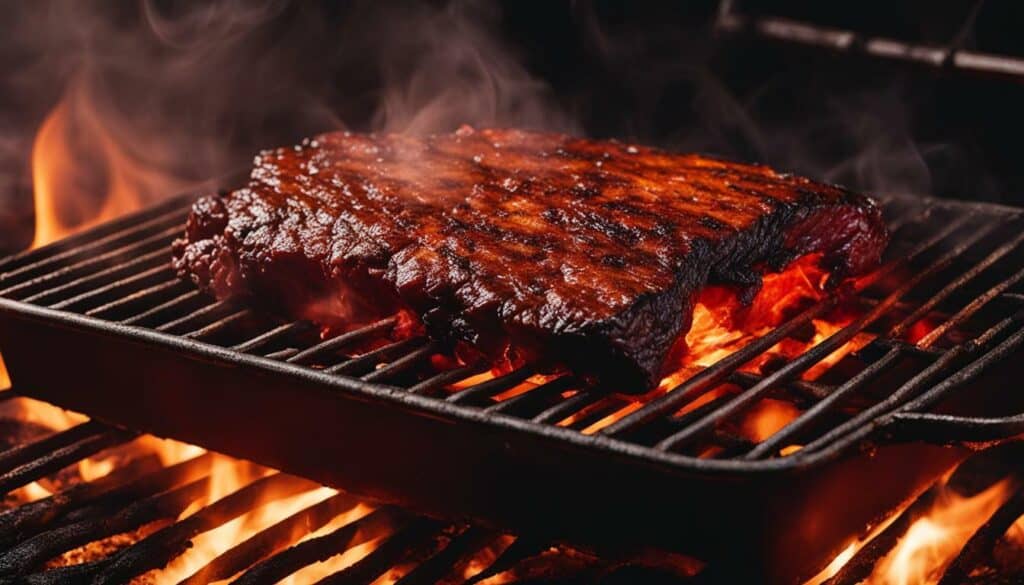
When it comes to the charring of meats and the formation of harmful compounds, it’s essential to be mindful of cooking methods and strive for a balanced diet. While further research is needed to fully understand the risks, taking precautions such as avoiding excessive charring and incorporating healthier cooking practices can help mitigate potential health concerns. Remember, moderation is key, and maintaining a diverse and nutritious diet is crucial for overall well-being.
Animal Studies and Tumor Development
Animal studies have shed some light on the potential dangers of consuming burnt food, revealing the ability of certain compounds to induce DNA changes and trigger tumor growth. These studies have found that when certain compounds, such as acrylamide, heterocyclic amines, and polycyclic aromatic hydrocarbons, are present in burnt or overcooked food, they can have adverse effects on the body.
The formation of acrylamide, a chemical compound that is believed to be a probable human carcinogen, is a concern when it comes to burnt food. The Maillard reaction, which occurs when starchy foods are cooked at high temperatures, can produce acrylamide. While there is no conclusive evidence on the cancer-causing potential of acrylamide in humans, it is recommended to minimize the consumption of burnt or overcooked foods as a precautionary measure.
In addition to acrylamide, grilled, fried, and broiled meats can also contain harmful compounds like heterocyclic amines and polycyclic aromatic hydrocarbons. These compounds have been linked to DNA changes and tumor development in animal studies. While the findings from animal studies cannot be directly translated to humans, they provide valuable insights into the potential risks associated with consuming burnt food.
| Compounds | Food Sources | Potential Health Effects |
|---|---|---|
| Acrylamide | Burnt or overcooked starchy foods | Possible carcinogenic effects |
| Heterocyclic amines | Grilled, fried, and broiled meats | Possible DNA changes and tumor development |
| Polycyclic aromatic hydrocarbons | Charred or smoked foods | Possible DNA changes and tumor development |
While the findings from animal studies are concerning, it is important to note that the effects of consuming burnt food may vary between individuals. Factors such as genetic predisposition, overall diet, and lifestyle habits can influence an individual’s susceptibility to the potential risks associated with burnt food. Further research is needed to fully understand the impact of burnt food on human health and to develop evidence-based guidelines.
To reduce the intake of acrylamide and minimize the consumption of burnt food, it is recommended to follow healthy cooking practices. These include toasting bread to a light brown color, avoiding overcooking or burning potatoes, and reducing the consumption of fried foods. It is also important to adopt a balanced eating plan that includes a variety of nutrient-rich foods such as fruits, vegetables, whole grains, and lean meats.

By being aware of the potential dangers of consuming burnt food and taking proactive steps to minimize exposure, individuals can make informed choices about their dietary habits and prioritize their health and well-being.
Individual Variations and Research Gaps
It’s important to recognize that the impact of eating burnt food may differ from person to person, and while studies have begun to uncover potential risks, further research is still needed. Our individual genetic makeup, metabolism, and overall health can influence how our bodies react to the consumption of acrylamide and other harmful compounds found in burnt food.
A study published in the Journal of Nutrition found that certain individuals may have a higher capacity to metabolize acrylamide and eliminate it from their bodies, reducing the potential health risks. However, this does not mean that everyone is immune to the harmful effects of burnt food. The study highlighted the need for more extensive research to fully understand the implications of individual variations.
Additionally, there are still gaps in our knowledge regarding the long-term effects of consuming burnt food. Most studies conducted so far have been animal studies or observational studies in humans, which have limitations in establishing causation. Clinical trials specifically designed to investigate the effects of burnt food on human health are lacking, and more rigorous research is necessary to provide conclusive evidence.
The Importance of Further Research
While the current evidence suggests a potential link between burnt food consumption and health risks, it is crucial to approach this topic with caution. We must continue to invest in scientific research to fill the gaps in our knowledge and provide more accurate guidelines for individuals.
Through well-designed studies, researchers can explore the mechanisms through which acrylamide and other harmful compounds affect the body and shed light on the specific health consequences they may pose. Understanding the dose-response relationship, the duration of exposure, and the effect of different cooking techniques on the production of these compounds will provide valuable insights.
In conclusion, while the dangers of eating burnt food have been highlighted, it is essential to take an informed approach. Limiting the consumption of overcooked or charred foods as a precautionary measure is advisable. By maintaining a balanced diet, adopting healthy cooking practices, and staying updated on the latest research findings, individuals can make informed choices to minimize potential risks to their health.
| Pros | Cons |
|---|---|
| Acrylamide formation in burnt food | Potential health risks |
| Increased awareness of cooking techniques | Need for further research |
| Healthy eating practices | Individual variations in susceptibility |
Strategies to Reduce Acrylamide Intake
To safeguard your health, it’s advisable to follow strategies that help reduce acrylamide intake and limit your exposure to burnt or overcooked foods. By making simple changes in your cooking habits, you can minimize the formation of acrylamide and lower potential risks to your health.
Here are some practical tips:
- Toast bread to a light brown color: When toasting bread, aim for a light brown color rather than a dark brown or blackened appearance. This will reduce the formation of acrylamide while still achieving a crisp and enjoyable texture.
- Avoid overcooking or burning potatoes: Whether you’re baking, roasting, or frying potatoes, be mindful of their cooking time. Overcooking or burning potatoes can lead to higher levels of acrylamide. Aim to cook them until they are golden brown instead.
- Choose healthier cooking methods: Grilling, frying, and broiling meats at high temperatures can produce harmful compounds. Opt for alternative cooking methods such as steaming, boiling, or baking, which can help reduce the formation of acrylamide and other potentially harmful substances.
- Reduce consumption of fried foods: Fried foods, especially those cooked at high temperatures, are more likely to contain higher levels of acrylamide. Limit your intake of fried foods and opt for healthier alternatives like baked or grilled options.
By implementing these strategies and being mindful of your cooking techniques, you can lower your acrylamide intake and promote your overall well-being.

| Food | Preferred Cooking Method |
|---|---|
| Potatoes | Bake until golden brown |
| Bread | Toasted to a light brown color |
| Meat | Grilled or baked instead of fried |
“By making conscious choices in our cooking methods, we can reduce our exposure to potentially harmful compounds like acrylamide. Remember, it’s the small changes that can make a big difference in protecting our health.”
Summary:
Reducing acrylamide intake and minimizing exposure to burnt or overcooked foods is crucial for maintaining good health. Strategies such as toasting bread to a light brown color, avoiding overcooking or burning potatoes, choosing healthier cooking methods, and reducing fried food consumption can help mitigate the risks associated with acrylamide. By adopting these simple changes, we can enhance our overall well-being and enjoy delicious meals without compromising our health.
Healthy Cooking Practices
By adopting healthy cooking practices, you can minimize the chances of burning your food and protect your health from potential harmful effects. Cooking methods that involve high temperatures or prolonged cooking times can increase the formation of acrylamide and other harmful compounds in foods. Here are some tips to help you cook your meals in a healthier way:
- Avoid overcooking or burning your food. Keep an eye on the cooking time and adjust the heat as needed to prevent charring or blackening.
- Opt for steaming or boiling instead of frying or grilling. Steaming and boiling are gentler cooking methods that can help preserve the nutritional value of your food.
- Choose lower temperatures. Cooking at lower temperatures can reduce the formation of acrylamide and other harmful compounds. Use the lowest temperature necessary to cook your food thoroughly.
- Marinate your meats. Marinating your meats before grilling or broiling can help prevent the formation of harmful compounds. A marinade with citrus juices, vinegar, and herbs can add flavor and provide a protective barrier.
- Use alternative cooking methods. Consider using alternative cooking methods like baking, roasting, or stir-frying to achieve delicious and healthy results.
Remember, healthy cooking practices not only reduce the risk of consuming burnt food but also promote overall well-being. By adopting these practices, you can make nutritious meals that are both delicious and safe for you and your loved ones.
| Cooking Method | Potential Health Effects |
|---|---|
| Grilling | Can produce harmful compounds like heterocyclic amines and polycyclic aromatic hydrocarbons, which have been linked to cancer. |
| Frying | Can lead to the formation of acrylamide and trans fats, which have been associated with an increased risk of chronic diseases. |
| Baking/Roasting | Gentler cooking methods that can help retain the natural flavors and nutrients of foods. |
| Stir-frying | Quick cooking method that helps preserve the nutritional value of vegetables and meats. |
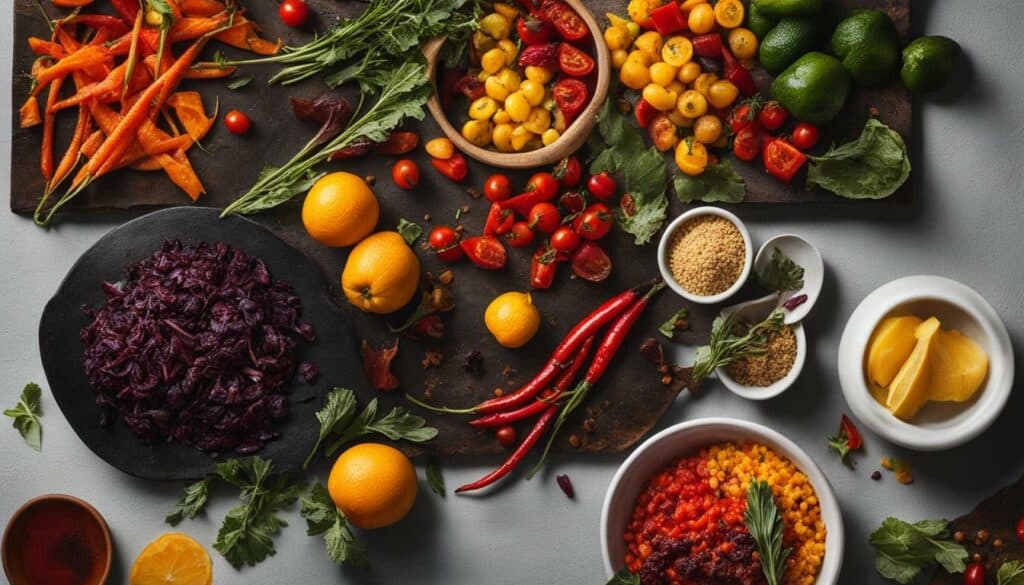
“By adopting healthy cooking practices, you can minimize the chances of burning your food and protect your health from potential harmful effects.” – Nutritionist Sarah Adams
Incorporating a Balanced Diet
Alongside avoiding burnt food, it’s crucial to adopt a well-rounded eating plan that incorporates a wide range of fruits, vegetables, whole grains, and lean meats to support overall health and minimize potential risks. These nutrient-rich foods provide essential vitamins, minerals, and antioxidants that can help protect against the harmful effects of burnt or overcooked food.
When it comes to fruits and vegetables, aim to include a variety of colors in your diet. Different colors indicate different nutrients, so by incorporating a rainbow of produce, you can ensure you’re getting a diverse array of vitamins and minerals. For example, orange fruits and vegetables like carrots and sweet potatoes are rich in beta-carotene, while leafy greens like spinach and kale are packed with folate and iron.
Whole grains, such as brown rice, whole wheat bread, and quinoa, offer high fiber content, which aids in digestion and helps maintain a healthy weight. Additionally, these grains provide essential nutrients like B vitamins and minerals like magnesium and selenium. Lean meats, such as skinless poultry, fish, and legumes, are excellent sources of protein, which plays a vital role in building and repairing body tissues.
To further enhance your diet, consider incorporating healthy fats from sources like avocados, nuts, and olive oil. These fats are essential for brain function, hormone production, and nutrient absorption. It’s also important to stay hydrated by drinking an adequate amount of water throughout the day.

A balanced diet not only helps minimize the potential risks associated with consuming burnt food but also offers a multitude of other health benefits. By nourishing your body with a variety of wholesome foods, you can support optimal physical and mental well-being.
Some potential benefits of a balanced diet include:
- Improved energy levels and overall vitality
- Enhanced immune function and reduced risk of chronic diseases
- Maintained healthy weight and reduced risk of obesity-related conditions
- Lowered risk of heart disease, high blood pressure, and type 2 diabetes
- Improved digestion and gut health
- Better cognitive function and mental clarity
Remember, achieving a balanced diet is about moderation and portion control. It’s okay to enjoy occasional treats or indulge in your favorite dishes, but strive for overall balance and make mindful choices to support your long-term health and well-being.
Conclusion
While the full extent of the health risks associated with eating burnt food is still not completely understood, taking precautions and adopting healthier cooking and eating habits can contribute to overall well-being.
It’s important to be mindful of the formation of acrylamide, a potential carcinogen that can be produced when starchy foods are cooked at high temperatures. Although the direct link between acrylamide and cancer in humans is yet to be proven, it’s advisable to reduce the consumption of burnt or overcooked foods as a precautionary measure.
In addition to acrylamide, grilled, fried, and broiled meats can also produce harmful compounds like heterocyclic amines and polycyclic aromatic hydrocarbons. Animal studies have shown that these compounds can lead to DNA changes and tumor development. Therefore, it’s prudent to moderate the consumption of charred or blackened meats.
Individual variations in how our bodies react to burnt food underscore the need for further research. By implementing strategies to reduce acrylamide intake, such as toasting bread to a light brown and avoiding overcooking or burning potatoes, we can minimize our exposure to potentially harmful compounds. Additionally, incorporating a well-balanced diet that includes a variety of nutrient-rich foods, such as fruits, vegetables, whole grains, and lean meats, can help mitigate any potential risks associated with consuming burnt food.
While we may not have all the answers yet, being mindful of our cooking techniques and food choices is a proactive step towards maintaining good health. By taking these precautions and adopting healthier habits, we can enjoy our meals while minimizing potential risks.
FAQ
Q: Is eating burnt food bad for you?
A: Eating burnt food may be bad for you due to the formation of acrylamide, a chemical compound believed to be a probable human carcinogen.
Q: How is acrylamide formed?
A: Acrylamide can be produced when starchy foods are cooked at high temperatures, causing them to burn or brown.
Q: Is there conclusive evidence linking acrylamide to cancer in humans?
A: While there is no conclusive evidence on the cancer-causing potential in humans, it is recommended to minimize the consumption of burnt or overcooked foods as a precautionary measure.
Q: Are there other harmful compounds in burnt food?
A: Grilled, fried, and broiled meats can also produce harmful compounds like heterocyclic amines and polycyclic aromatic hydrocarbons, which studies have shown can cause DNA changes and tumors in animals.
Q: Do the effects of burnt food vary between individuals?
A: Yes, the effects of consuming burnt food may vary between individuals, and more research is needed to fully understand the risks.
Q: How can I reduce my intake of acrylamide?
A: Strategies to reduce acrylamide intake include toasting bread to a light brown color, avoiding overcooking or burning potatoes, and reducing consumption of fried foods.
Q: What are some healthy cooking practices to prevent burnt food?
A: Healthy cooking practices include using lower cooking temperatures, monitoring food closely while cooking, and using cooking methods that don’t involve high heat exposure, such as steaming or boiling.
Q: How can I incorporate a balanced diet to mitigate potential health risks?
A: It is suggested to adopt a healthy eating plan that includes fruits, vegetables, whole grains, and lean meats to maintain a balanced diet and minimize health risks associated with consuming burnt food.
Are Chinese Date Recipes Healthy to Eat?
Delicious chinese date recipes offer both taste and nutrition. Packed with essential vitamins, fiber, and antioxidants, these recipes make for a healthy and delightful choice. From desserts to savory dishes, Chinese date recipes offer a unique and flavorful twist to your meals.

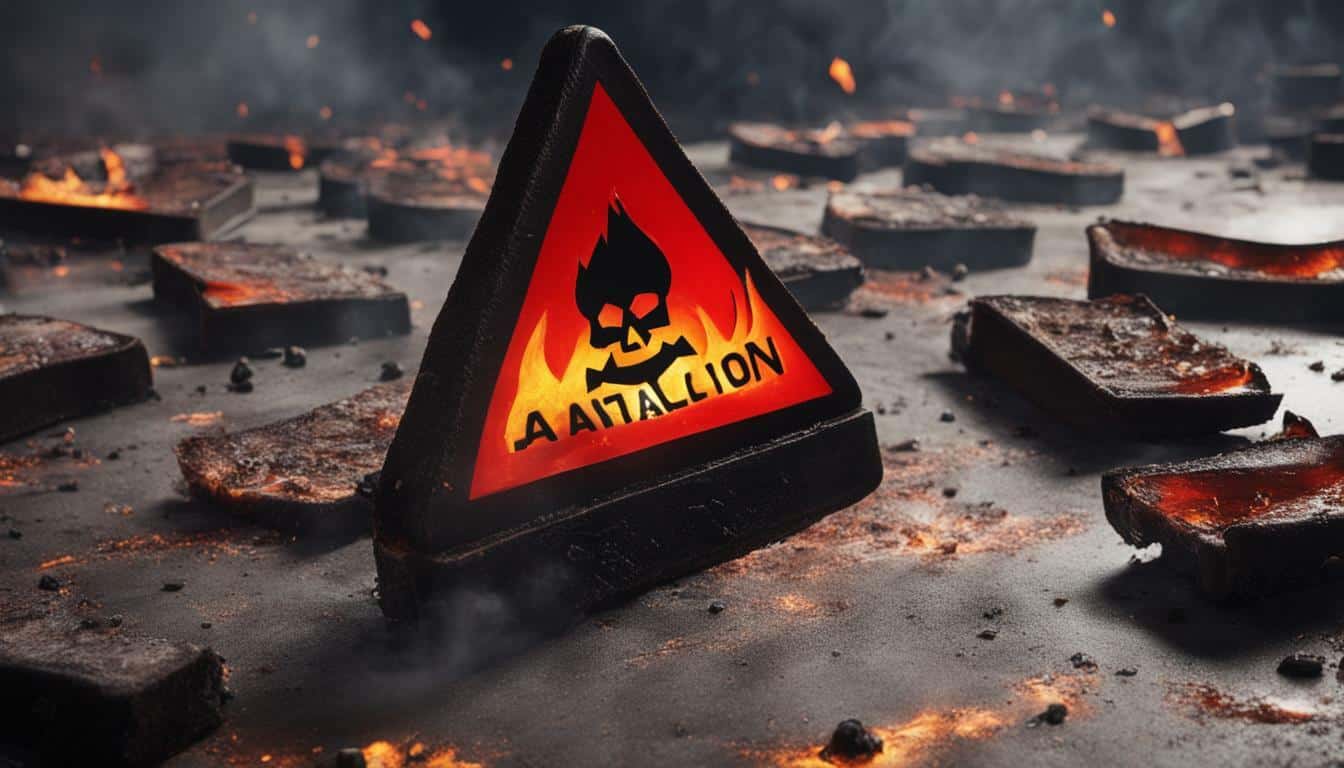
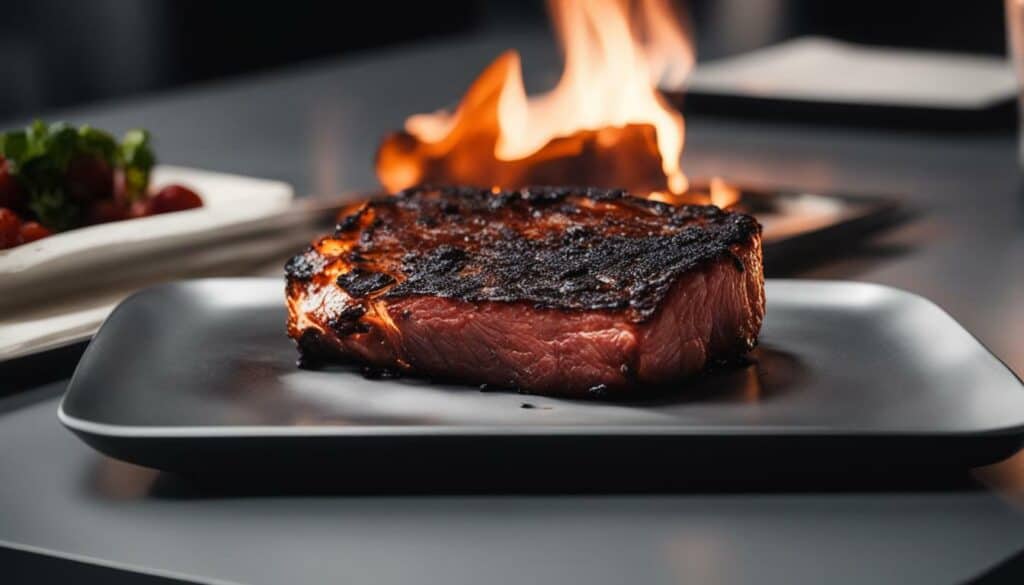



Leave a Reply